Sold Ceramics
Sold Japanese Kakiemon / Kakiemon-style wares
Page 1
When internal wars began to impede the production of, and consequently the trade in, Chinese porcelain toward the end of the Ming Dynasty (1368-1644), several Dutch Merchants began to buy porcelain in Japan. At the same time, the production of faience pottery in Delft was stimulated, in order to compensate the shortage of Chinese porcelain. From 1658 onward, the Dutch East India Company, (Vereenigde Oost-Indische Compagnie, VOC) also recognized these commercial opportunities and began to order greater quantities of porcelain from Japan. In addition to a very diverse assortment of blue-and-white porcelain. largely in the style of traditional Chinese export goods, the coloured Japanese porcelain formed an unexpected new article in the Netherlands. It soon became very fashionable and the Company was able to generate a great deal of profit in this field.
One potter who benefited greatly from the new Dutch orders was Sakaida Kakiemon, who owned a porcelain kiln near Nangawara, just outside Arita. His porcelains characterized by a lucid whit composition and texture with decorations in various tints of enamel including orange-red, grass-green and blue.
In the Sold Japanese Kakiemon / Kakiemon-style wares category the sold objects are categorized In the following order:
- Sold Japanese Kakiemon wares
- Sold Japanese Kakiemon-style wares
Sold Japanese Kakiemon wares

Sold Ceramics - Sold Japanese Kakiemon / Japanese Kakiemon-style wares - Japanese Kakiemon - Page 1
Object 2012476
Dish
Japan (Kakiemon)
1680-1700
Height 32 mm (1.26 inch), diameter of rim 221 mm (8.70 inch), diameter of footring 136 mm (5.35 inch) weight 370 grams (13.05 ounce (oz.))
Dish on footring, moulded sides with a scalloped underglaze brown-edged rim. On the base five spur-marks in a W-pattern. Decorated in underglaze blue. In the centre a river scene with a small cabin on three poles in the water connected by a bridge to a large rock with blossoming prunus. In the background mountains with clouds and a flock of birds. On the foreground a seated fisherman near a shore with houses and pulled up drying fishing nets. The ten panels on the sides are respectively filled with a stylised flower, a scholar with his attendant carrying a parasol in a garden landscape, a pheasant (phoenix?) near a flowering plant, bamboo plants growing from and near rock work and a dragon with a flaming pearl. On the reverse a scroll with pendent karakusa, on the base a square fuku (good luck) mark in running script.
For a very similar decorated octagonal dish, please see:
- Fine & Curious: Japanese Export Porcelain in Dutch Collections, (C.J.A. Jörg, Hotei Publishing, Amsterdam 2003), p.148, cat. 164.
- Kakiemon Porcelain. A Handbook. (M. Fitski, Leiden University Press, Leiden & Rijksmuseum Amsterdam, 2011), p.143, cat. 162.
Jörg states that apparently, the depiction of the small cabin or pavilion in the water is rare and no identical pieces seem to be recorded in the literature, although a derivation of the motif is seen in a panel on a bowl in the Shibata collection. (Kyushu 1997, cat. 225). The combination of a phoenix with a flaming pearl is highly unusual. (Jörg 2003/1, p.148, cat. 164)
Condition: A circular firing flaw that has been secured with old copper wire restorations and a chip to the rim.
References:
Jörg 2003/1, cat. 306 & 307, 307a, 308, 309, 310 & 311
Price: Sold.

Sold Ceramics - Sold Japanese Kakiemon / Japanese Kakiemon-style wares - Japanese Kakiemon - Page 1
Object 2012475
Dish
Japan (Kakiemon)
1680-1700
Height 29 mm (1.14 inch), diameter of rim 136 mm (5.35 inch), diameter of footring 87 mm (3.43 inch) weight 125 grams (4.41 ounce (oz.))
Lobed dish on footring, moulded sides with a scalloped underglaze brown-edged rim. On the base a single spur-mark. Decorated in underglaze blue with a river scene covering the whole surface. A fisherman on a shore and a figure crossing a bridge. On the reverse a foliate scroll. The low footring is encircled with a double concentric band. Marked on the base with a fuku ['luck'] mark within a double-lined square in seal script.
Following Japanese convention, the men are depicted as Chinese. The overlapping waves are derived from a textile design and are rendered schematically. It is interesting to note how such highly stylised elements mingle with otherwise rather realistic designs. Japanese scholars date the mark to 1670-80, but further research might suggest a longer period for its use. (Jörg 2003/1, p.143, cat. 157)
Condition: Perfect.
Reference:
Price: Sold.

Sold Ceramics - Sold Japanese Kakiemon / Japanese Kakiemon-style wares - Japanese Kakiemon - Page 1
Object 2012552
Dish
Japan (Kakiemon)
1680-1700
Height 33 mm (1.29 inch), diameter of rim 190 mm (7.48 inch), diameter of footring 115 mm (4.53 inch) weight 300 grams (10.58 ounce (oz.))
Dish on footring. Lobed rim with wavy patterns in low relief, underglaze brown-edged rim. Four spur-marks in a Y-pattern. Decorated in underglaze blue with a overall design of a river scene, a fisherman with a net on a roofed jetty, a figure on the opposite bank near a bridge. On the reverse a scroll with pendant karakusa, on the base a square fuku (good luck) mark in running script.
This charming depiction of simple rural life will have fitted the Dutch ideal of Oriental exoticism. It is a typically Japanese scene, elements of which - the fisherman, the roofed jetty, the man at the bridge - are encountered in various combinations on other export ware of the period. This piece, however, is outstanding for its painstaking execution, the well-balanced composition, and its expressiveness. Very few similar pieces seem to be recorded; two (this type and a variant) are included in the catalogue Bleu-and-white published by the Kyushu Ceramic Museum, Arita. Twickel Castle, Delden, The Netherlands has seven identical dishes. (Jörg 2003/1, pp.148-149)
For an identically shaped, sized and decorated dish, please see;
- World's Blue and White, exhibition catalogue The Kyushu Ceramic Museum, Arita 1993, cat. 183.
- Complete Catalogue of the Shibata Collection, (The Kyushu Ceramic Museum, Kyushu 2003), p.251, cat. 1950.
- Fine & Curious: Japanese Export Porcelain in Dutch Collections, (C.J.A. Jörg, Hotei Publishing, Amsterdam 2003), pp.148-149, cat. 165.
- The Shibata Collection Part VII, (The Kyushu Ceramic Museum, Kyushu, 2001), p.217, cat. 448.
- Complete Catalogue of the Shibata Collection, (The Kyushu Ceramic Museum, Kyushu 2003), p.266, cat. 2071.
For an identically shaped and sized and similarly decorated dish, please see;
- Complete Catalogue of the Shibata Collection, (The Kyushu Ceramic Museum, Kyushu 2003), p.251, cat. 1950.
- The Shibata Collection Part VIII, (The Kyushu Ceramic Museum, Kyushu, 2002), p.27, cat. 34.
Condition: A firing flaw to the rim.
References:
Arita 1993, cat. 183
Price: Sold.

Sold Ceramics - Sold Japanese Kakiemon / Japanese Kakiemon-style wares - Japanese Kakiemon - Page 1
Object 2011790
Dish
Japan (Kakiemon)
1680-1700
Height 33 mm (1.29 inch), diameter of rim 187 mm (7.36 inch), diameter of footring 111 mm (4.37 inch) weight 320 grams (11.29 ounce (oz.))
Dish on footring. Lobed rim with wavy patterns in low relief, underglaze brown-edged rim. Four spur-marks in a Y-pattern. Decorated in underglaze blue with a overall design of a river scene, a fisherman with a net on a roofed jetty, a figure on the opposite bank near a bridge. On the reverse a scroll with pendant karakusa, on the base a square fuku (good luck) mark in running script.
This charming depiction of simple rural life will have fitted the Dutch ideal of Oriental exoticism. It is a typically Japanese scene, elements of which - the fisherman, the roofed jetty, the man at the bridge - are encountered in various combinations on other export ware of the period. This piece . however, is outstanding for its painstaking execution, the well-balanced composition, and its expressiveness. Very few similar pieces seem to be recorded; two (this type and a variant) are included in the catalogue Bleu-and-white published by the Kyushu Ceramic Museum, Arita. Twickel Castle, Delden, The Netherlands has seven identical dishes. (Jörg 2003/1, pp.148-149)
For an identically shaped, sized and decorated dish, please see;
- World's Blue and White, exhibition catalogue The Kyushu Ceramic Museum, Arita 1993, cat. 183.
- Complete Catalogue of the Shibata Collection, (The Kyushu Ceramic Museum, Kyushu 2003), p.251, cat. 1950.
- Fine & Curious: Japanese Export Porcelain in Dutch Collections, (C.J.A. Jörg, Hotei Publishing, Amsterdam 2003), pp.148-149, cat. 165.
- The Shibata Collection Part VII, (The Kyushu Ceramic Museum, Kyushu, 2001), p.217, cat. 448.
- Complete Catalogue of the Shibata Collection, (The Kyushu Ceramic Museum, Kyushu 2003), p.266, cat. 2071.
For an identically shaped and sized and similarly decorated dish, please see;
- Complete Catalogue of the Shibata Collection, (The Kyushu Ceramic Museum, Kyushu 2003), p.251, cat. 1950.
- The Shibata Collection Part VIII, (The Kyushu Ceramic Museum, Kyushu, 2002), p.27, cat. 34.
Condition: A chip to the rim and inner footring.
References:
Arita 1993, cat. 183
Price: Sold.

Sold Ceramics - Sold Japanese Kakiemon / Japanese Kakiemon-style wares - Japanese Kakiemon - Page 1
Object 2011767
Dish
Japan (Kakiemon)
1680-1700
Height 34 mm (1.33 inch), diameter of rim 188 mm (7.68 inch), diameter of footring 112 mm (4.41 inch) weight 330 grams (11.64 ounce (oz.))
Dish on footring, moulded sides with a scalloped underglaze brown-edged rim. On the base four spur-marks in a Y-pattern. Decorated in underglaze blue with a village with a church and houses, a lighthouse with trees, figures with a cow and poles with clouds. On the reverse stylized foliate scrolls. The low footring is encircled with a double concentric band. Marked on the base with a fuku ['luck'] mark within a double-lined square in seal script, four spur-marks in a Y-pattern and an old circular paper collectors label which reads: '47.'.
The design on this dish has traditionally been called 'Deshima' or 'Scheveningen'. This design was highly popular in The Netherlands, and possibly also in Japan as a kind of Western exoticism. It first appeared, in underglaze blue, on Japanese dishes of the late 17th century.
It certainly does not depict the Dutch factory in Deshima (Nagasaki), a fan-shaped, man-made island in Japan to which Westerners were restricted between 1641 and 1862. Scheveningen, a fishermen´s village on the Dutch coast near The Hague seems a more appropriate name. In fact 47 'Scheveningen' plates were already mentioned in the 1778 sale catalogue of the porcelain shop of Martha Raap in Amsterdam, clearly indicating this type. Much research was done to find the print that was used as a model, but non with this view have yet come to light. it is therefore possible that another source was used, maybe a plate or dish in the so-called Frijtom style. Frederick van Frijtom (c.1632-1702) was a Delft faience painter who specialised in plates, dishes and plaques with landscapes in blue. His work is characterised by wide blank rims on plates and dishes, detailed painting of trees and landscapes and a specific way of drawing clouds. (Jörg 2003/1) The existence of a Scheveningen Japanese plate in precisely this style makes it plausible that at some point a Delft example by Frijtom was used. (Terwee 1989)
For this Japanese 'Scheveningen decoration' dish in Frijtom style, please see
- Japans porselein met blauwe decoraties uit de tweede helft van de zeventiende en de eerste helft van de achttiende eeuw. (D.F. Lunsingh Scheurleer in Mededelingenblad Nederlandse Vereniging van Vrienden van de Ceramiek, vols. 64/65, 1971), p.73, cat. 66.
- China for the West. Chinese Porcelain and other Decorative Arts for Export illustrated from the Mottahedeh Collection, (D.S. Howard & J. Ayers, Philip Wilson Publishers for Sotheby Parke Bernet Publications, London 1978), vol. 1, pp.72-73, cat. 32a.
- Fine & Curious: Japanese Export Porcelain in Dutch Collections, (C.J.A. Jörg, Hotei Publishing, Amsterdam 2003), p.240, cat. 306.
Several variations of the ´Scheveningen decoration´ design are known, in both Japanese and – later - Chinese porcelain. These were mostly dishes, but elements of the design were also used on bowls and cups. Some copies are barely recognisable.
For some examples of variants of the Japanese ´Scheveningen decoration´ design, please see:
- Japanese Porcelain, (S. Jenyns, Faber & Faber, London / Boston, 1979), cat. 19a, (ii).
- Ko-Imari from the collection of Oliver Impey, (Barry Davies Oriental Art, London, 1997), pp.136-137, cat. 75.
- Japanese Export Porcelain. Catalogue of the Collection of the Ashmolean Museum, Oxford, (O. Impey, Hotei Publishing, Amsterdam, 2002), p.227, cat. 391, 392, 393 & 394.
- Fine & Curious: Japanese Export Porcelain in Dutch Collections, (C.J.A. Jörg, Hotei Publishing, Amsterdam 2003), p.240, cat. 307, 307a, 308, 310 & 311.
- Complete Catalogue of the Shibata Collection, (The Kyushu Ceramic Museum, Kyushu 2003), p.326, cat. 2459.
- Faszination des Fremden: China - Japan - Europa, (D. Antonin & D. Suebsman, Hetjens-Museum, Deutsches Keramikmuseum Düsseldorf, 2009), pp.242-243, cat. 98.
- Kakiemon Porcelain. A Handbook. (M. Fitski, Leiden University Press, Leiden & Rijksmuseum Amsterdam, 2011), pp.94-95, cat. 106 & 107.
For a similarly, sold, Japanese 'Scheveningen decoration' dish, please see:
An interesting example in the collection of the Groninger Museum: a blank Chinese porcelain dish overdecorated in Delft (the Netherlands) c.1700-1730. The circle was thus made complete, the design having travelled from Delft to Japan and then back to Delft. (Jörg 2003/1, cat. 307a)
For this Delft variant, please see:
- Fine & Curious: Japanese Export Porcelain in Dutch Collections, (C.J.A. Jörg, Hotei Publishing, Amsterdam 2003), p.241, cat. 307a.
Another interesting example in this regard, from Meissen, c. 1730:
In the cargo of the Ca Mau shipwreck, c.1725 a total of 80 dishes decorated with the Chine de commande 'Scheveningen decoration' were found. As we know the original designs were traditionally made in Japan for the Dutch. These dishes were so popular that Chinese potters copied them in order to compete with the Japanese. Such copies were already known, but the occurrence in the Ca Mau made it likely that these dishes, and therefore most of the porcelain cargo, were destined for Batavia because only the Dutch would appreciate such specific Chine de commande pieces. (Amsterdam 2007, p.17, lot 223-233 & p.179)
For some examples of later Chinese copies of the ´Scheveningen decoration´ design, please see:
- Chine de Commande, (D.F. Lunsingh Scheurleer, Hilversum, 1966), cat. 272.
- China for the West. Chinese Porcelain and other Decorative Arts for Export illustrated from the Mottahedeh Collection, (D.S. Howard & J. Ayers, Philip Wilson Publishers for Sotheby Parke Bernet Publications, London 1978), vol. 1, pp.72-73, cat. 32.
- Japanese Porcelain, (S. Jenyns, Faber & Faber, London / Boston, 1979), cat. 19a, (i).
- La porcelaine des Compagnies des Indes a décor Occidental, (F. & N. Hervouët & Y. Bruneau, Flammarion - Pere Castor, Paris 1986), p.88, cat. 4.20 & 4.21.
- The Choice of the Private Trader. The Private Market in Chinese Export Porcelain illustrated from the Hodroff Collection, (D.S. Howard, Zwemmer, London, 1994), p.44, cat. 11.
- Made in Imperial China. 76,000 pieces of Chinese Export Porcelain from the Ca Mau Shipwreck, circa 1725, auction catalogue Sotheby’s Amsterdam, 29, 30 & 31 January 2007, p74-75, lot 223-233.
- Faszination des Fremden: China - Japan - Europa, (D. Antonin & D. Suebsman, Hetjens-Museum, Deutsches Keramikmuseum Düsseldorf, 2009), pp.242-243, cat. 99.
- Kostbaar Goed van Grote Pracht. Chinees en Japans exportporselein uit de 17e en 18e eeuw, (Mr. L.C.A.M. Schölvinck, Zwolle 2010), p.57.
This dish is a Kakiemon version of the ´Scheveningen decoration´ design.
Fitski describes an identical Kakiemon Nangawara workshop, 'Scheveningen’ dish decorated in underglaze blue. He compares it with two Kakiemon-style 'Scheveningen ' dishes decorated in underglaze blue from the Uchiyama workshop. Fitski notes that the Kakiemon piece has the fine texture characteristic of Nangawara. Also the true Kakiemon piece is made in a mould, the others are not. Furthermore, the painting on the Kakiemon example is more detailed and precise, with finer colour gradations than the two Uchiyama examples. The figures on all the dishes are rather strange and doll-like, but the Kakiemon figures are less stiff than the others. Overall, the painting of the Kakiemon-style dishes is more simplified. Other clues are provided when Fitski looks at the back of the plate. One is the fuku mark in seal script. Only the Kakiemon dish has a mark, very similar to our dish. Pieces with high-quality painting invariably bear an equally well-written mark and a mark can thus help to confirm identification. However, since some marks found on Kakiemon pieces from Nangawara workshops were also used on products from Uchiyama workshops, one cannot use it as the sole identifying characteristic. The most common mark by far is 'fuku' within a double-lined square, originally a Chinese commendation mark. This cursively written mark in different variants has come to be seen as the hallmark of Nangawara pieces from the period 1670 to 1700. On these pieces, the mark is neatly drawn and the calligraphy of the character is fluent but careful. The fuku variant on the base of object 2011767 seems to have been used around 1680 to 1700. (Jörg 2003/1, cat. 309), (Fitski 2011, p.164)
Looking at the reverse, this Kakiemon example also has a characteristic decoration with stylised foliate scrolls. One of the Kakiemon-style dishes does have a similar foliate scroll decoration, but it is less carefully painted. Furthermore, the Kakiemon example has a smoothly finished footring, just as on our dish. The Uchiyama examples still have sand adhering to theirs. The difference in the colour of the body is also evident in the footring: the Kakiemon dish is whiter. Lastly, the Kakiemon piece Fitski describes has one small, neat spur mark, while those on the other dishes are larger and less neat. If we look at our dish the four spur-marks are also very neat. (Fitski 2011, pp.94-95)
For similarly Kakiemon Nangawara 'Scheveningen decoration' dishes decorated in underglaze blue, please see:
- Porcelain for Palaces. The Fashion for Japan in Europe 1650-1750, (J. Ayers, O. Impey & J.V.G. Mallet, Oriental Ceramic Society & The British Museum, London 1990), p.113, cat. 67.
- The Voyage of Old-Imari Porcelains: Exhibition Catalogue of the Kyushu Ceramic Museum, Arita 2000, p.48, cat. 71.
- Fine & Curious: Japanese Export Porcelain in Dutch Collections, (C.J.A. Jörg, Hotei Publishing, Amsterdam 2003), p.242, cat. 309.
For a similarly Kakiemon-style Uchiyama 'Scheveningen decoration' dishes decorated in underglaze blue, please see:
Underneath a comparison between the Kakiemon 'Scheveningen decoration' dish and a later Japanese and Chinese version.
Kakiemon version, c.1680-1700 Japanese version, c.1700 Chinese version, c.1720-1735
Condition: Two frits to the rim.
References:
Lunsingh Scheurleer 1966, cat. 272
Lunsingh Scheurleer 1971, cat. 65 & 65
Howard & Ayers 1978, cat. 32 & 32a
Jenyns 1979, cat. 19a. (i) & (ii)
Hervouët 1986, cat. 4.20 & 4.21
Ayers, Impey & Mallet 1990, cat. 67 & 301
Impey 2002, cat. 391, 392, 393 & 394
Jörg 2003/1, cat. 306 & 307, 307a, 308, 309, 310 & 311
Amsterdam 2007, p.17, lot 223-233
Antonin & Suebsman 2009, cat. 98 & 99
Fitski 2011, p.164 & cat 105, 106 & 107
Price: Sold.
More pictures of object 2011332, another identically, shaped, sized and decorated, sold, dish >>

Sold Ceramics - Sold Japanese Kakiemon / Japanese Kakiemon-style wares - Japanese Kakiemon - Page 1
Object 2012504
Bowl
Japan
c.1700
Height 100 mm (3.94 inch), diameter of rim 259 mm (10.20 inch), diameter of footring 135 mm (5.31 inch), weight 1,122 grams (39.58 ounce (oz.))
Lobbed bowl on footring. On the base six spur-marks. Decorated in underglaze blue. In the centre the 'Scheveningen' design. The sides undecorated, the outside with a continuous scene of a landscape with two figures seated at a table, a sage and a boy on a terrace, and a pine tree by a fence with a pair of phoenixes one perched on a branch the other in flight with clouds above. The are divided by rockwork and flowering prunus. On the base a square fuku (good luck) mark in seal script.
The design on this bowl has traditionally been called 'Deshima' or 'Scheveningen'. This design was highly popular in The Netherlands, and possibly also in Japan as a kind of Western exoticism. It first appeared, in underglaze blue, on Japanese dishes of the late 17th century.
It certainly does not depict the Dutch factory in Deshima (Nagasaki), a fan-shaped, man-made island in Japan to which Westerners were restricted between 1641 and 1862. Scheveningen, a fishermen´s village on the Dutch coast near The Hague seems a more appropriate name. In fact 47 'Scheveningen' plates were already mentioned in the 1778 sale catalogue of the porcelain shop of Martha Raap in Amsterdam, clearly indicating this type. Much research was done to find the print that was used as a model, but non with this view have yet come to light. it is therefore possible that another source was used, maybe a plate or dish in the so-called Frijtom style. Frederick van Frijtom (c.1632-1702) was a Delft faience painter who specialised in plates, dishes and plaques with landscapes in blue. His work is characterised by wide blank rims on plates and dishes, detailed painting of trees and landscapes and a specific way of drawing clouds. (Jörg 2003/1) The existence of a Scheveningen Japanese plate in precisely this style makes it plausible that at some point a Delft example by Frijtom was used. (Terwee 1989)
Several variations of the ´Scheveningen decoration´ design are known, in both Japanese and – later - Chinese porcelain. These were mostly dishes, but elements of the design were also used on bowls and cups. Some copies are barely recognisable.
For another identically shaped, sized and decorated bowl, please see:
- The Shibata Collection Part VII, (The Kyushu Ceramic Museum, Kyushu, 1991), p.242, cat. 503.
- Chinese Ceramics in the Collection of the Rijksmuseum, Amsterdam. The Ming and Qing Dynasties, (C.J.A. Jörg in collaboration with J. van Campen, London, 1997), p. 243, cat. 312.
- Complete Catalogue of the Shibata Collection, (The Kyushu Ceramic Museum, Kyushu 2003), p.278, cat. 2167.
The 'Scheveningen' motif has been altered, but the compositional elements are still easily recognisable. Rocks and figures create a strong diagonal that is absent in earlier versions. An enamelled Meissen bowl of c.1730 in the British Museum closely copies this shape and design, including the diagonal composition.
For this Meissen bowl, please see:
An interesting example in the collection of the Groninger Museum: a blank Chinese porcelain dish overdecorated in Delft (the Netherlands) c.1700-1730. The circle was thus made complete, the design having travelled from Delft to Japan and then back to Delft. (Jörg 2003/1, cat. 307a)
For this Delft variant, please see:
- Fine & Curious: Japanese Export Porcelain in Dutch Collections, (C.J.A. Jörg, Hotei Publishing, Amsterdam 2003), p.241, cat. 307a.
In the cargo of the Ca Mau shipwreck, c.1725 a total of 80 dishes decorated with the Chine de commande 'Scheveningen decoration' were found. As we know the original designs were traditionally made in Japan for the Dutch. These dishes were so popular that Chinese potters copied them in order to compete with the Japanese. Such copies were already known, but the occurrence in the Ca Mau made it likely that these dishes, and therefore most of the porcelain cargo, were destined for Batavia because only the Dutch would appreciate such specific Chine de commande pieces. (Amsterdam 2007, p.17, lot 223-233 & p.179)
The Kyushu Ceramic Museum, Arita, dates this specific mark to 1670-80, which seems rather early. Fitski states that the character of this mark has not been identified. It occurs on Nangawara pieces that date from 1670 to 1700. For this mark please see:
- The Shibata Collection Part V, (The Kyushu Ceramic Museum, Kyushu, 1997), p.253, cat. 16.
- Kakiemon Porcelain. A Handbook. (M. Fitski, Leiden University Press, Leiden & Rijksmuseum Amsterdam, 2011), p.165.
Condition: A re-stuck piece to the rim and several chips to the rim.
References:
Ayers, Impey & Mallet 1990, cat. 33
Jörg & Van Campen 1997, cat.307a & cat. 312
Amsterdam 2007, p.17, lot 223-233 & p.179
Price: Sold.

Sold Ceramics - Sold Japanese Kakiemon / Japanese Kakiemon-style wares - Japanese Kakiemon - Page 1
Object 2012062
Dish
Japan
1690-1710
Height 38 mm (1.50 inch), diameter of rim 149 mm (5.87 inch), diameter of footring 78 mm (3.07 inch), weight 198 grams (6.98 ounce (oz.))
Decagonal dish on footring, moulded sides, upturned underglaze brown-edged rim. On the bas a single supr-mark. Decorated in underglaze blue with a river scene covering the whole surface. On the right-hand bank two scholars seated at a table near a flowering prunus tree, on the opposite bank a servant near a banana tree, walking towards a bridge. On the reverse, a foliate scroll. Marked on the base with a square fuku (good luck) mark in running script.
For a similarly decorated dish, please see:
Condition: Restored.
Reference:
Price: Sold.

Sold Ceramics - Sold Japanese Kakiemon / Japanese Kakiemon-style wares - Japanese Kakiemon - Page 1
Object 2012294
Saucer
Japan
c.1680
Height 18 mm (0.71 inch), diameter of rim 115 mm (4.53 inch), diameter of footring 68 mm or (2.67 inch), weight 81 grams (2.86 ounce (oz.))
Saucer on footring. The spreading rim slightly foliated. On the base a single spur-mark. Kakiemon decorated in underglaze blue and enamels with a flowerpot (kabon) on a low table filled with a flowering peony plant. On the sides four panels filled with peony sprays growing from rockwork. The panels are divided by basket work. The reverse is undecorated.
Kakiemon with underglaze blue.
A major product of the Kakiemon kiln was blue-and-white with spaces for an unspecific enamelled pattern. Sherds of both pieces with a border decoration in underglaze blue with an empty well and with pieces with a well decoration but with a wide rim decorated only with blue-and-white rockwork that does not demand a specific pattern have been found at the Kakiemon kiln-site. Few pieces have been found that demand a specific decoration in enamel. These pieces are never on the nigoshide body, which never bears underglaze blue. (Impey 2002, p.124)
According to Impey in his book Japanese export porcelain, the panelling in red is unusual in Kakiemon but is paralled in the very large bowl at the Staatliche Kunstsammlungen in Dresden. (Impey 2002, p.134, cat. 183)
The flowerpot (kabon) motif was used on the first Japanese export porcelain in the mid-17th century and comes from Chinese Kraak porcelain. It also occurs on Kakiemon-style pieces, often in combination with a kraak-style border divided into sections. (Fitski 2011, p.149)
For an identically Kakiemon decorated teacup in the collection of the Ashmolean Museum in Oxford, please see:
- Japanese Export Porcelain. Catalogue of the Collection of the Ashmolean Museum, Oxford, (O. Impey, Hotei Publishing, Amsterdam, 2002), p.134, cat. 183.
For the very large bowl at Staatliche Kunstsammlungen in Dresden, please see:
- Early Japanese Porcelain: Arita Porcelain in the Dresden Collection, (F. Reichel, Londen 1981), pl.23.
- Kakiemon Porcelain. A Handbook. (M. Fitski, Leiden University Press, Leiden & Rijksmuseum Amsterdam, 2011), p.40, cat. 33.
Condition: Enamel loss to the central decoration and a frit to the rim.
References:
Impey 2002, p.124, p.134 & cat. 183
Price: Sold.
Sold Japanese Kakiemon-style wares

Sold Ceramics - Sold Japanese Kakiemon / Japanese Kakiemon-style wares - Japanese Kakiemon-style - Page 1
Object 2012060
Saucer
Japan
1670-1690
Height 23 mm (0.90 inch), diameter of rim 118 mm (4.65 inch), diameter of footring 64 mm or (2.52 inch), weight 73 grams (2.27 ounce (oz.))
Saucer on footring, short flat rim with slightly upturned edge. On the base a single spur-mark. Decorated in Kakiemon-type enamels with flowering prunus, bamboo and pine growing from brushwood fences. The reverse is undecorated. Kiln-grit adhering to the footring.
This saucer is representative of a group of pieces without a nigoshide body. The quality of their porcelain bodies, with some impurities or kiln-grit on the front and back, and decoration is mediocre. Such pieces were not made by the Kakiemon kiln, but by contemporary competitors. (Jörg 2003/1, p.75, cat. 62 & p.76 cat. 63)
The Three Friends of Winter (shôchikubai) are pine, Prunus mune and bamboo. Both pine and bamboo remain green throughout the winter, while the early blossoms of the Prunus mune are harbingers of spring. In China, the combination of the positive characteristics attributed to each motif represented the ideal character of the Confucian scholar. They became a subject in Japanese painting in the 15th century, and are also found on Kakiemon porcelain. (Fitski 2011, p.154)
In China, the blossoms of the Prunus mume (ume) symbolize purity and renewal, and occur very early on in Chinese painting, frequently in combination with pine and bamboo. In Japan, it primarily heralds the coming of spring, and is also used in art and literature to evoke the feel of the cold of winter loosening its grip. The delicate scent of the blossoms also evokes memories of a love one for many poets. The incisively painted, angular branches of the Prunus mume are a very characteristic element of Kakiemon, mostly depicted with fine black lines and clear red blossoms against the white porcelain. The blossoms are sometimes blown up to almost chrysanthemum-like proportions, and it is mostly depicted in a fairly stylized manner. Bamboo (take) is evergreen, and pliable, yet very strong. It is quick to recover after a heavy snowfall or a storm. In Japan, these qualities have led to its representation of indomitability, and the posture that a wise person should adopt, particularly in times of adversity. On kakiemon, bamboo has this connotation primarily in combination with Prunus mune and pine. The pine tree (matsu), an evergreen capable of living to extreme old age, represents power, a long and happy life, and even immortality. On Kakiemon porcelain we see it depicted as an old, venerable tree, but also sometimes as a young shoot, in combination with the crane. The brushwood fence (shibagaki) is made of bundles of twigs tied together, it is frequently combined with a bamboo trellis, an enlarged branch of flowering tree peony, and a shishi. It is a motif that occurs frequently on Kakiemon, with or without these companions, and one which evidently appealed greatly to the European consumer, given the fact that it is often seen on European imitations of Kakiemon. (Fitski 2011, p.148, p.151, pp.153-154 & p.163)
For an identically shaped and Kakiemon decorated saucer, please see:
For a spoon or leak tray, over-decorated in The Netherlands with the Kakiemon brushwood fence and shishi design please see:
Condition: Some glaze impurities, a fleabite to the footring, two hairlines and a shallow chip to the rim.
References:
Jörg 2003/1, cat. 62 & p.76 cat. 63
Fitski 2011, p.148, p.151, pp.153-154 & p.163
Price: Sold.

Sold Ceramics - Sold Japanese Kakiemon / Japanese Kakiemon-style wares - Japanese Kakiemon-style - Page 1
Object 2011910A
Dish
Japan
1680-1700
Height 30 mm (1.18 inch), diameter of rim 220 mm (8.66 inch), diameter of footring 119 mm (4.69 inch), weight 380 grams (13.40 ounce (oz.))
Dish on footring with a flat rim. On the base four spur-marks in a Y-pattern. Decorated in underglaze blue with two Hó-ó birds perched on a rock amongst chrysanthemums and peonies. On the sides and rim a border with birds, flowers and scrolling foliage. The reverse is undecorated.
In Japan the bird on the rock, the Hó-ó, is a mythological animal, emblematic of imperial authority. It is considered a symbol of wisdom, strength and also an inhabitant of the Buddhist Paradise. According to legend it would perch only on a kiri- or Paulownia Imperialis tree (Chinese: Wu t’ung). Carving the wood of the kiri is an art form in Japan and China. Several Asian string instruments are made from it, including the Japanese koto. The leaves and blossom of the Paulownia Imperialis became the official crest (mon) of the Empress of Japan. The kiri tree is emblematic of rectitude (Arts 1983, p.133 & 149)
According to Fitski Kakiemon production can be divided into two groups: pieces made in Nangawara which we call 'Kakiemon' and pieces made in Uchiyama, for which we use the appellation 'Kakiemon style'. This dish is representative of a group of pieces, mainly dishes, without the milky-white nigoshide body which is the main characteristic of Kakiemon. In this case, the porcelain is greyish with some impurities or kiln grit on the front and back. Such pieces were not made by the Kakiemon kiln, but by contemporary competitors and are therefore referred to as Kakiemon style. (Jörg 2003/1, p.75 & cat. 62), (Fitski 2011, pp.70-71, p.90 & p.97)
For similarly shaped, sized and in underglaze blue, Kakiemon style decorated dishes, please see
- Ko-Imari from the collection of Oliver Impey, (Barry Davies Oriental Art, London, 1997), pp. 100-101, cat. 49.
- Sold Ceramics - Sold Kakiemon / Kakiemon style wares - Objects 2011910A, 2011930 and 2011931.
For a similarly, in underglaze blue with enamels, Kakiemon style decorated dish, please see:
- Ko-Imari from the collection of Oliver Impey, (Barry Davies Oriental Art, London, 1997), pp. 100-101, cat. 49.
- Complete Catalogue of the Shibata Collection, (The Kyushu Ceramic Museum, Kyushu 2003), p.201, cat. 1545.
Condition: A chip to the rim.
References:
Fitski 2011, pp.70-71, p.90 & p.97, cat. 108, 109 & 110
Price: Sold.
More pictures of object 2011930, another identically shaped, sized and decorated, sold dish >>
More pictures of object 2011931, another identically shaped, sized and decorated, sold dish >>
More pictures of object 2012032, another identically shaped, sized and decorated, sold dish >>
More pictures of object 2012287, another identically shaped, sized and decorated, sold dish >>

Sold Ceramics - Sold Japanese Kakiemon / Japanese Kakiemon-style wares - Japanese Kakiemon-style - Page 1
Object 2012506
Dish
Japan
c.1690
Height 30 mm (1.18 inch), diameter of rim 190 mm (7.48 inch), diameter of footring 104 mm (4.09 inch), weight 318 grams (11.22 ounce (oz.))
Dish on footring with a flat rim. On the base four spur-marks in a Y-pattern. Decorated in underglaze blue with two Hó-ó birds perched on a rock amongst chrysanthemums and peonies. The sides and rim in Chinese Kraak-style with eight large panels containing peach and auspicious symbols and eight narrow panels filled with a scale pattern and dots. On the reverse a scroll with pendent karakusa. On the base a spurious six-character reign mark of the Ming Emperor Chenghua (1465-1487).
Comparison between object 2012506 and sold object 2011910A (not included in this sale/offer.)
Barry Davies states that plates of this design appear to have one of two types of borders: birds in flight amongst flowers and foliage, or one of Kraak style, as in this example. This design is also known in coloured enamels. Sherds of similar examples have been found at the Kakiemon kiln site. (London 1997, p.36)
In Japan the bird on the rock, the Hó-ó, is a mythological animal, emblematic of imperial authority. It is considered a symbol of wisdom, strength and also an inhabitant of the Buddhist Paradise. According to legend it would perch only on a kiri- or Paulownia Imperialis tree (Chinese: Wu t’ung). Carving the wood of the kiri is an art form in Japan and China. Several Asian string instruments are made from it, including the Japanese koto. The leaves and blossom of the Paulownia Imperialis became the official crest (mon) of the Empress of Japan. The kiri tree is emblematic of rectitude (Arts 1983, p.133 & 149)
According to Fitski Kakiemon production can be divided into two groups: pieces made in Nangawara which we call 'Kakiemon' and pieces made in Uchiyama, for which we use the appellation 'Kakiemon style'. This dish is representative of a group of pieces, mainly dishes, without the milky-white nigoshide body which is the main characteristic of Kakiemon. In this case, the porcelain is greyish with some impurities or kiln grit on the front and back. Such pieces were not made by the Kakiemon kiln, but by contemporary competitors and are therefore referred to as Kakiemon style. (Jörg 2003/1, p.75 & cat. 62), (Fitski 2011, pp.70-71, p.90 & p.97)
For an identically, shaped, sized and in underglaze blue decorated dish, please see:
For a similarly shaped, sized and in underglaze blue, Kakiemon style decorated dish with the other type of border please see
Condition: Poor, broken in two pieces and glued.
References:
Fitski 2011, pp.70-71, p.90 & p.97, cat. 108, 109 & 110
Price: Sold.

Sold Ceramics - Sold Japanese Kakiemon / Japanese Kakiemon-style wares - Japanese Kakiemon-style - Page 1
Object 2011853
Dish
Japan
1670-1700
Height 30 mm (1.18 inch), diameter of rim 193 mm (7.60 inch), diameter of footring 120 mm (4.72 inch), weight 293 grams (10.34 ounce (oz.))
Dish on footring. On the base five spur-marks in an X-pattern. Decorated in Kakiemon type enamels. In the centre with a Hó-ó bird, standing on one leg, on rockwork flanked by flowering peony and chrysanthemum plants in iron-red, within a double circle in underglaze blue. On the sides four groups of rocks with flowering plants. On the reverse a continuous spray in underglaze blue. Round the foot an underglaze blue line, on the base a wide circle in underglaze blue.
In Japan the bird on the rock, the Hó-ó, is a mythological animal, emblematic of imperial authority. It is considered a symbol of wisdom, strength and also an inhabitant of the Buddhist Paradise. According to legend it would perch only on a kiri- or Paulownia Imperialis tree (Chinese: Wu t’ung). Carving the wood of the kiri is an art form in Japan and China. Several Asian string instruments are made from it, including the Japanese koto. The leaves and blossom of the Paulownia Imperialis became the official crest (mon) of the Empress of Japan. The kiri tree is emblematic of rectitude (Arts 1983, p.133 & 149)
According to Fitski Kakiemon production can be divided into two groups: pieces made in Nangawara which we call 'Kakiemon' and pieces made in Uchiyama, for which we use the appellation 'Kakiemon style'. This dish is representative of a group of pieces, mainly dishes, without the milky-white nigoshide body which is the main characteristic of Kakiemon. In this case, the porcelain is greyish with some impurities or kiln grit on the front and back. Such pieces were not made by the Kakiemon kiln, but by contemporary competitors and are therefore referred to as Kakiemon style. (Jörg 2003/1, p.75 & cat. 62), (Fitski 2011, pp.70-71, p. 90 & p.97)
For an almost identically, in Kakiemon style, decorated dish with two instead of one Hó-ó birds, please see:
For similarly Uchiyama made and in 'Kakiemon style' decorated dishes, please see:
- Kakiemon Porcelain. A Handbook, (M. Fitski, Leiden / Amsterdam, 2011), pp.96-100, cat 108, 109 & 110.
- Chinese and Japanese porcelain for the Dutch Golden Age, (J. van Campen & T. Eliëns ed., Waanders Publishers in collaboration with Rijksmuseum Amsterdam, Gemeentemuseum Den Haag, Groninger Museum, Keramiekmuseum Princessehof Leeuwarden, Zwolle 2014, p.148, Fig. 16.
Condition: A frit to the rim.
References:
Fitski 2011, pp.70-71, p.90 & p.97, cat. 108, 109 & 110
Campen & Eliëns 2014, p.148, Fig. 16
Price: Sold.
More pictures of object 2012183, another identically, shaped, sized and decorated, sold, dish >>

Sold Ceramics - Sold Japanese Kakiemon / Japanese Kakiemon-style wares - Japanese Kakiemon-style - Page 1
Object 2012046
Dish
Japan
1670-1700
Height 41 mm (1.61 inch), diameter of rim 252 mm (9.92 inch), diameter of footring 133 mm (5.23 inch), weight 582 grams (20.53 ounce (oz.))
Dish on footring, straight sides. Decorated in Kakiemon type enamels. In the centre a riverscape with two boats near an island in the river, two figures crossing a bridge Pagodas with pine trees, distant huts in the mountains within a double circle in underglaze blue. On the sides three groups of rocks in underglaze blue with flowering peony, camelia and fruiting pomegranate, in enamels. The reverse is undecorated.
According to Fitski Kakiemon production can be divided into two groups: pieces made in Nangawara which we call 'Kakiemon' and pieces made in Uchiyama, for which we use the appellation 'Kakiemon style'. This dish is representative of a group of pieces, mainly dishes, without the milky-white nigoshide body which is the main characteristic of Kakiemon. In this case, the porcelain is greyish with some impurities or kiln grit on the front and back. Such pieces were not made by the Kakiemon kiln, but by contemporary competitors and are therefore referred to as Kakiemon style. (Jörg 2003/1, p.75 & cat. 62), (Fitski 2011, pp.70-71, p. 90 & p.97)
For an identically, Uchiyama made, in 'Kakiemon style' decorated dish, please see:
For identically and similarly Kakiemon (not Uchiyama made in 'Kakiemon style) decorated dishes, please see:
- De Japanse Porseleinkast. Japans export porselein uit de 17e en 18e eeuw, exhibition catalogue Museum Willet-Holthuysen, Amsterdam 1972, pp.54-55, cat. nr 215.
- Aritaporzellan im sogenannten 'Kakiemonstil' als Vorbild für die Meissener Porzellanmanufactur, (M. Shono, München, 1973), cat. 85.
- Eastern Ceramics and other works of art from the collection of Gerald Reitlinger, (Ashmolean Museum, Oxford 1981), p.77, cat 194.
- The Shibata Collection Part I, (The Kyushu Ceramic Museum, Kyushu, 1990), p.116 & p.199, cat. 294.
- Japanese Export Porcelain. Catalogue of the Collection of the Ashmolean Museum, Oxford, (O. Impey, Hotei Publishing, Amsterdam, 2002), p.128, cat. 168, 169 & 170.
- Complete Catalogue of the Shibata Collection, (The Kyushu Ceramic Museum, Kyushu 2003), p.209, cat. 1615.
- Dragons, Tigers and Bamboo: Japanese Porcelain and its impact in Europe - The Mac-Donald Collection, (O.Impey, C.J.A. Jörg and C. Mason, Douglas & McIntyre Publishers Inc., Vancouver/Toronto/Berkeley 2009), p.124, Fig. 79.
Condition: A firing flaw to the reverse wall.
References:
Impey 2002, cat. 168, 169 & 170
Impey, Jörg & Mason 2009, Fig, 79
Fitski 2011, pp.70-71, p.90 & p.97, cat. 109
Price: Sold.

Sold Ceramics - Sold Japanese Kakiemon / Japanese Kakiemon-style wares - Japanese Kakiemon-style - Page 1
Objects 2012481 and 2012482
A pair of dishes
Japan
1670-1690
2012481: Height 26 mm (1.02 inch), diameter of rim 184 mm (7.24 inch), diameter of footring 111 mm (4.37 inch), weight 288 grams (10.16 ounce (oz.))
2012481: Height 23 mm (0.91 inch), diameter of rim 182 mm (7.17 inch), diameter of footring 111 mm (4.37 inch), weight 261 grams (9.21 ounce (oz.))
Two dishes on footrings. On the base of dish 2012481 four spur-marks in a Y-pattern and on the base of dish 2012482 three spur-marks in a V-pattern. Decorated in Kakiemon type enamels with a chrysanthemum spray within a double circle in underglaze blue. On the sides three groups of rocks one with a flowering prunus, the second with flowering bamboo and the last with various flowering plants. On the reverse two wide spread fruiting peach sprays. Round the foot three underglaze blue lines, on the base a wide circle in underglaze blue.
The enamelling is the main characteristic of Kakiemon and Kakiemon-style porcelain. As Imari, the enamel colours also developed out of the early enamels and became more transparent in time. In fact, the differences are minimal; it is the combination and the way of painting that makes it 'Kakiemon'. The vivid overglaze blue, the soft bluish-green, the brownish to light yellow, the light aubergine and especially the bight vermilion-red are characteristic. Black and gold are often used for details. Outlines are done in thin black lines drawn by a skilled and steady hand. A coffee-brown iron oxide is used on the edge of rims but never in the main decoration. (Jörg 2003/1, p.68)
Fitski states that Kakiemon production can be divided into two groups: pieces made in Nangawara which we call 'Kakiemon' and pieces made in Uchiyama, for which we use the appellation 'Kakiemon style'. This dish is representative of a group of pieces, mainly dishes, without the milky-white nigoshide body which is the main characteristic of Kakiemon. In this case, the porcelain is greyish with some impurities or kiln grit on the front and back. Such pieces were not made by the Kakiemon kiln, but by contemporary competitors and are therefore referred to as Kakiemon style. (Fitski 2011, pp.70-71, p.90 & p.97)
For a very similarly on the reverse decorated dish, please see:
Condition:
2012481: Two firing flaws.
2012482: Two firing flaws.
Reference:
Price: Both sold.

Sold Ceramics - Sold Japanese Kakiemon / Japanese Kakiemon-style wares - Japanese Kakiemon-style - Page 1
Object 2012527 & 2012547
Tea bowl and saucer
Japan
1680-1700
Height of tea bowl 42 mm (1.65 inch), diameter of rim 65 mm (2.56 inch), diameter of footring 31 mm (1.29 inch), weight 42 gram (1.48 ounce (oz.))
Height of saucer 25 mm (0.98 inch), diameter of rim 111 mm (4.37 inch), diameter of footring 58 mm (2.17 inch), weight 97 gram (3.42 ounce (oz.))
Tea bowl and saucer on footrings, spreading sides. The saucer with a foliated rim. Decorated in Kakiemon-style enamels with three formal lotus flowers arranged in a symmetrical pattern connected by scrolls the reverse is plain. (The matching tea bowl was acquired at a later date)
Kakiemon-style tea wares are relatively rare, although the the Dutch East India Company, (Vereenigde Oost-Indische Compagnie, VOC) shipped polychrome tea bowls with matching saucers from the beginning of their porcelain trade with Japan. They met almost no competition from the Chinese until the 1680s. The formal symmetrical composition does not reflect the Kakiemon assortment, and these tea wares were probably made by a competing workshop. (Jörg 2003/1, p.198)
(This Japanese, Kakiemon decorated, double gourd vase (not included in this sale/offer) in the collection of the SKD Staaliche Kunstsammlungen Dresden is on the top bulb decorated with a connecting design very similar to that seen on this tea bowl and saucer.)
Identically shaped, sized and decorated tea bowls and saucers are in the collection of:
- Groninger Museum
- Museum Hessen Kassel
- Staatliche Kunstsammlungen Dresden (decorated with an extra flowerspray on the bottom of the tea bowl)
- Ashmolean Museum Oxford
- An English private collection
For an identically shaped, sized and decorated tea bowl and saucer, please see:
- Eastern Ceramics and other works of art from the collection of Gerald Reitlinger, (Ashmolean Museum, Oxford 1981), p.69, cat 164.
- Porcelain for Palaces. The Fashion for Japan in Europe 1650-1750, (J. Ayers, O. Impey & J.V.G. Mallet, Oriental Ceramic Society & The British Museum, London 1990), p.142, cat. 102.
- Japanese Export Porcelain. Catalogue of the Collection of the Ashmolean Museum, Oxford, (O. Impey, Hotei Publishing, Amsterdam, 2002), p.84, cat. 76.
- Fine & Curious: Japanese Export Porcelain in Dutch Collections, (C.J.A. Jörg, Hotei Publishing, Amsterdam 2003), p.198, cat. 248.
For an identically shaped and sized tea bowl decorated with an extra flower spray on the bottom, please see:
Condition:
Teacup: Perfect.
Saucer: Perfect.
References:
Ayers, Impey & Mallet 1990, cat. 102
Staatliche Kunstsammlungen Dresden
Price: Sold.

Sold Ceramics - Sold Japanese Kakiemon / Japanese Kakiemon-style wares - Japanese Kakiemon-style - Page 1
Object 2012330
Dish
Japan
1685-1700
Height 34 mm (1.34 inch), diameter of rim 210 mm (8.27 inch), diameter of footring 132 mm (5.20 inch), weight 410 grams (14.46 ounce (oz.))
Dish on footring. On the base four spur-marks in a Y-pattern. Decorated in Kakiemon type enamels with a peony spray within a double circle in underglaze blue. On the sides two groups of rocks with flowering plants. On the reverse three flower sprays. Round the foot three underglaze blue lines, on the base a wide circle in underglaze blue.
The enamelling is the main characteristic of Kakiemon and Kakiemon-style porcelain. As Imari, the enamel colours also developed out of the early enamels and became more transparent in time. In fact, the differences are minimal; it is the combination and the way of painting that makes it 'Kakiemon'. The vivid overglaze blue, the soft bluish-green, the brownish to light yellow, the light aubergine and especially the bight vermilion-red are characteristic. Black and gold are often used for details. Outlines are done in thin black lines drawn by a skilled and steady hand. A coffee-brown iron oxide is used on the edge of rims but never in the main decoration. (Jörg 2003/1, p.68)
Fitski states that Kakiemon production can be divided into two groups: pieces made in Nangawara which we call 'Kakiemon' and pieces made in Uchiyama, for which we use the appellation 'Kakiemon style'. This dish is representative of a group of pieces, mainly dishes, without the milky-white nigoshide body which is the main characteristic of Kakiemon. In this case, the porcelain is greyish with some impurities or kiln grit on the front and back. Such pieces were not made by the Kakiemon kiln, but by contemporary competitors and are therefore referred to as Kakiemon style. (Fitski 2011, pp.70-71, p.90 & p.97)
For very similarly decorated dishes, please see:
- Aritaporzellan im sogenannten 'Kakiemonstil' als Vorbild für die Meissener Porzellanmanufactur, (M. Shono, München, 1973), cat. 86.
-
Shibata collection part I, (The Kyushu Ceramic Museum, Kyushu, 1990), p.132, cat. 334.
- Complete Catalogue of the Shibata Collection, (The Kyushu Ceramic Museum, Kyushu 2003), p.255, cat. 1984.
- Japanese Export Porcelain. Catalogue of the Collection of the Ashmolean Museum, Oxford, (O. Impey, Hotei Publishing, Amsterdam, 2002), p.88, cat. 85, 86 & 87.
- Fine & Curious. Japanese Export Porcelain in Dutch Collections, (C.J.A. Jörg, Hotei Publishing, Amsterdam, 2003), p.75, cat. 62.
Condition: Two hairlines to the rim.
References:
Price: Sold.

Sold Ceramics - Sold Japanese Kakiemon / Japanese Kakiemon-style wares - Japanese Kakiemon-style - Page 1
Object 2011676
Whistle
Japan
c.1700
Height 38 mm (1.49 inch), length 81 mm (3.19 inch), width 34 mm (1.34 inch), weight 44 grams (1.55 ounce (oz.))
Whistle modelled as a reclining boy with his head raised and supported by his hands, a hole in the base and one in his feet to blow the whistle decorated in Kakiemon-type overglaze blue, green, black and iron-red enamels.
The whistle is blown through a slot in the feet and operated through a hole in the base and the open mouth.
The idea of a figural whistle might have been borrowed from the Chinese, where blanc de chine whistles modelled as a European trader were quite common. The hairstyle here indicates that the figure is Chinese. (Jörg 2003/1, p.278), (www.vam.ac.uk)
Apparently, porcelain figures of humans and animals were a successful export item. The Dutch ordered figures from the very start of the Japanese porcelain trade making use of an already existing market for such figures. The origin of the shapes of the models is still a puzzle, although it seems logical that the Japanese potters used Japanese sources when making the moulds, perhaps referring to the indigenous doll tradition, to prints or to carved figures. These 'exotic' figures played their part in the export assortment, and were either bought by the Dutch East India Company, (Vereenigde Oost-Indische Compagnie (VOC)), privately by Dutch merchants, or by the Chinese. Three main groups of figures can be discerned: figures in the Kakiemon palette, Imari figures and figures after European models. Enamelled figures come in many shapes and varieties and were included in the export assortment from the beginning of the Dutch porcelain trade. Recent excavations at the former Akaemachi the 'Enameller's Quarter' in Arita, have yielded discarded fragments of biscuit-fired moulds of figures and pulls from moulds that sometimes closely fit existing Kakiemon-style figures. (Jörg 2003/1, p.273)
For an identically shaped and in Kakiemon-style enamels decorated whistle, please see:
For similarly, in Kakiemon-style enamels decorated whistles, please see:
- Ceramics crossed overseas. Jingdezhen, Imari and Delft from the Collection of the Groninger Museum, (C.J.A. Jörg et al., Tokyo, 1999), p.34, cat. 32.
- Fine & Curious. Japanese Export Porcelain in Dutch Collections, (C.J.A. Jörg, Hotei Publishing, Amsterdam, 2003), p.278, cat, 348
Condition: Some firing flaws near the slot in the feet.
References:
Price: Sold.
More pictures of object 2012595, another identically shaped, sized an decorated, sold, whistle >>

Sold Ceramics - Sold Japanese Kakiemon / Japanese Kakiemon-style wares - Japanese Kakiemon-style - Page 1
Objects 2011529 & 2011530
A pair of bowls
Japan
1700-1720
2011529 Height 43 mm (1.69 inch), diameter of rim 135 mm (5.31 inch), diameter of footring 69 mm (2.72 inch), weight 180 grams (6.35 ounce (oz.))
2011530 Height 45 mm (1.77 inch), diameter of rim 135 mm (5.31 inch), diameter of footring 62 mm (2.44 inch), weight 165 grams (5.82 ounce (oz.))
A pair of octagonal bowls on footrings, spreading rims with upturned underglaze brown-edges (2011530 with a single spur-mark on the base). Kakiemon-style, decorated in enamels and underglaze blue. On the inside with a central flower spay, on the sides bamboo growing near rocks and two prunus trees with wide-spreading flowering branches. The rim with a foliate border with flower heads. On the outside two wide spread flowering trees with a bird perched on a branch. Near the footring and on the base a single concentric band, on the outer footring a double concentric band.
The Kakiemon kiln had a preference for hexagonal and octagonal shapes. The brown edge is characteristic and does not appear on early enamelled pieces. However, it is not always clear if the iron oxide was applied on the glaze, or if the rim was unglazed or wiped clean first. Whether this had a function (some say it was added to prevent chipping), or was only decorative is unknown. (Jörg 2003/1, p.77)
Three identically, shaped, sized and Kakiemon decorated bowls are in an English private collection and two are in the National Museum of Scotland.
Condition:
2011529: A firing flaw and a fleabite to the rim
2011530: Two restored spots on the rim.
Reference:
Price: Sold.

Sold Ceramics - Sold Japanese Kakiemon / Japanese Kakiemon-style wares - Japanese Kakiemon-style - Page 1
Object 2012483
Dish
Japan (Arita / Kakiemon-style)
First half 18th century
Height 36 mm (1.42 inch), diameter of rim 186 mm (7.32 inch), diameter of footring 112 mm (4.41 inch) weight 257 grams (9.07 ounce (oz.))
Dish on footring. Five lobed rim, underglaze brown-edged rim. On the base a single spur-mark. Decorated in various overglaze enamels and gold with a single flower head in the centre. On the sides bamboo, pine and prunus growing from rockwork. Round the rim a cloud-pattern border in low relief. On the reverse five flower sprays. On the outer footring three concentric bands in iron-red.
The Three Friend of Winter
Bamboo [take]
Bamboo is evergreen, and pliable, yet very strong. It is quickly to recover after a heavy snowfall or a storm. In Japan, these qualities have led to its representation of indomitability, and the posture that a wise person should adopt, particularly in times of adversity. On Kakiemon, bamboo has this connotation primarily in combination with Prunus mume and pine. (Fitski 2011, p.148)
Pine [matsu]
The pine tree, an evergreen capable of living to extreme old age, represents power, a long and happy life, and even immortality. On Kakiemon porcelain we see it depicted as an old, venerable tree, but also sometimes as a young shoot, in combination with the crane. It is most frequently depicted in combination with the prunus and the bamboo as the Three Friends of Winter. (Fitski 2011, p.151)
Prunus mume [ume]
In China, the blossoms of the Prunus mumu symbolize purity and renewel, and occur very early on in Chinese painting, frequently in combination with pine and bamboo (the Three Friends of Winter). In Japan it primarily heralds the coming of spring, and is also used in art and literature to evoke the feel of the cold of winter loosening its grip. The delicate scent of the blossoms also evokes memories of a loved one for many poets. The incisively painted, angular branches of the Prunus mume are a very characteristic element of Kakiemon, mostly depicted with fine black lines and clear red blossoms against the white porcelain. The blossoms are sometimes blown up to almost chrysanthemum-like proportions, and it is mostly depicted in a fairly stylized manner. (Fitski 2011, p.153)
Condition: Fine crazing to the glaze caused during the cooling down process after the firing process.
Reference:
Fitski 2011, p.148, p.151 & p.153
Price: Sold.


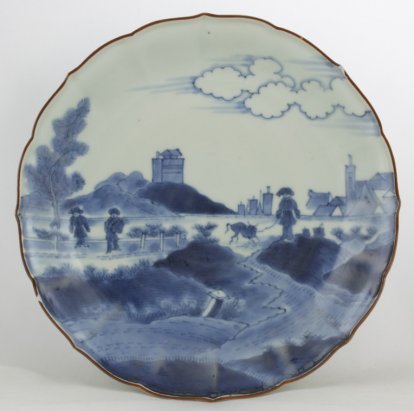
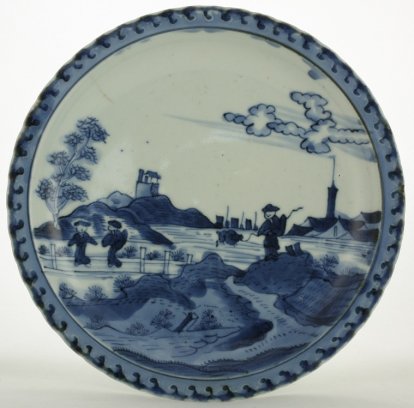
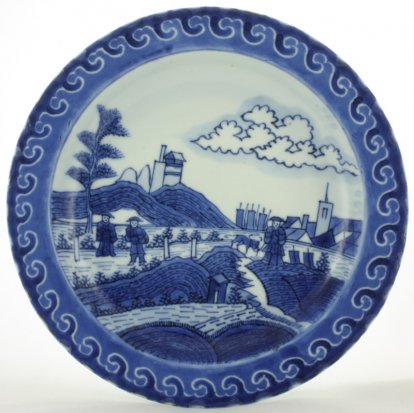
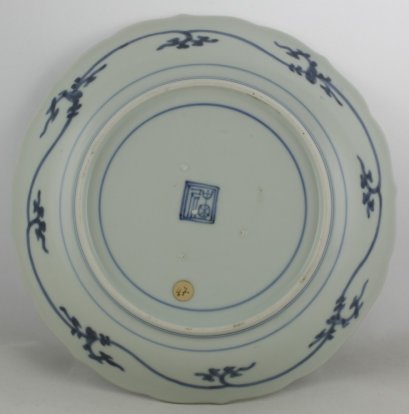
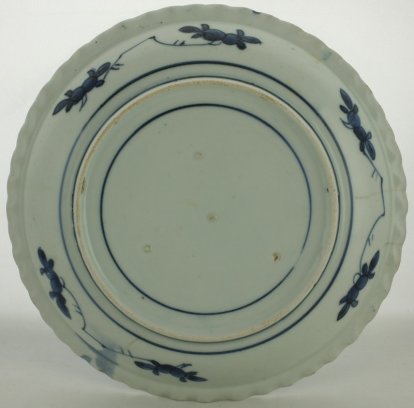
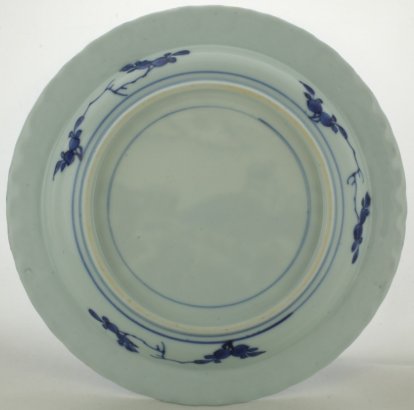
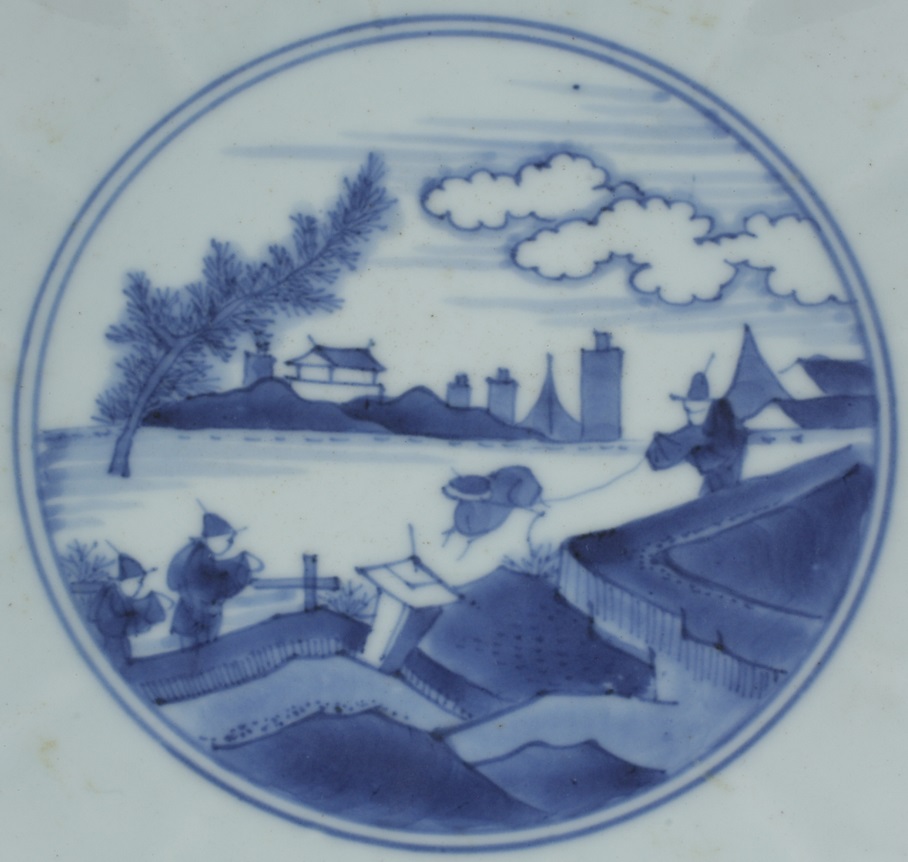
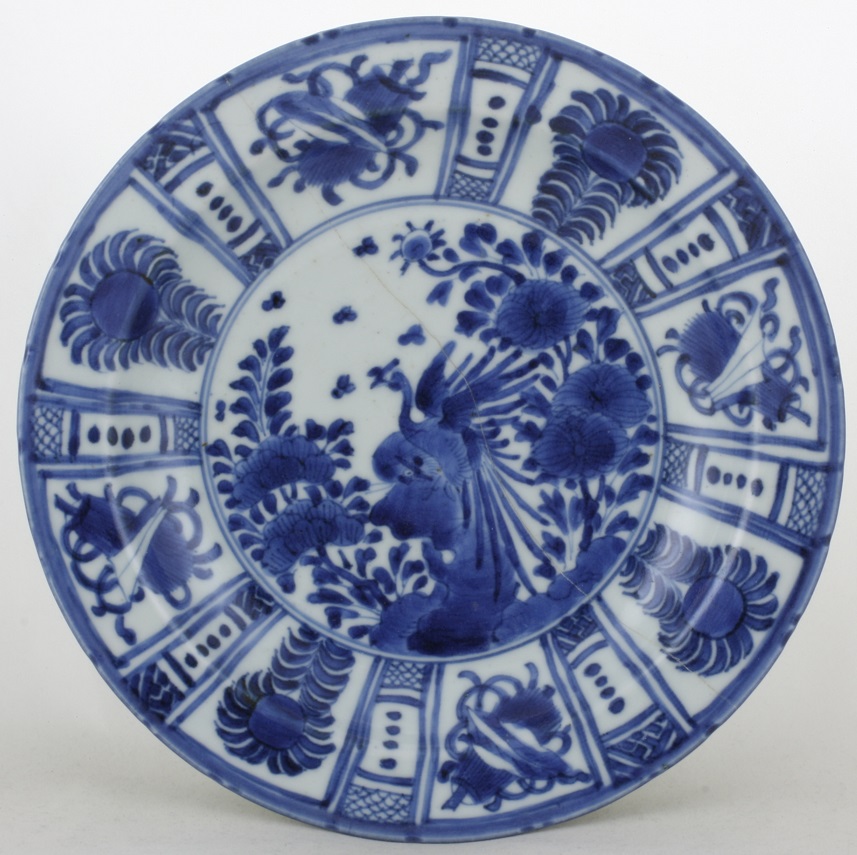
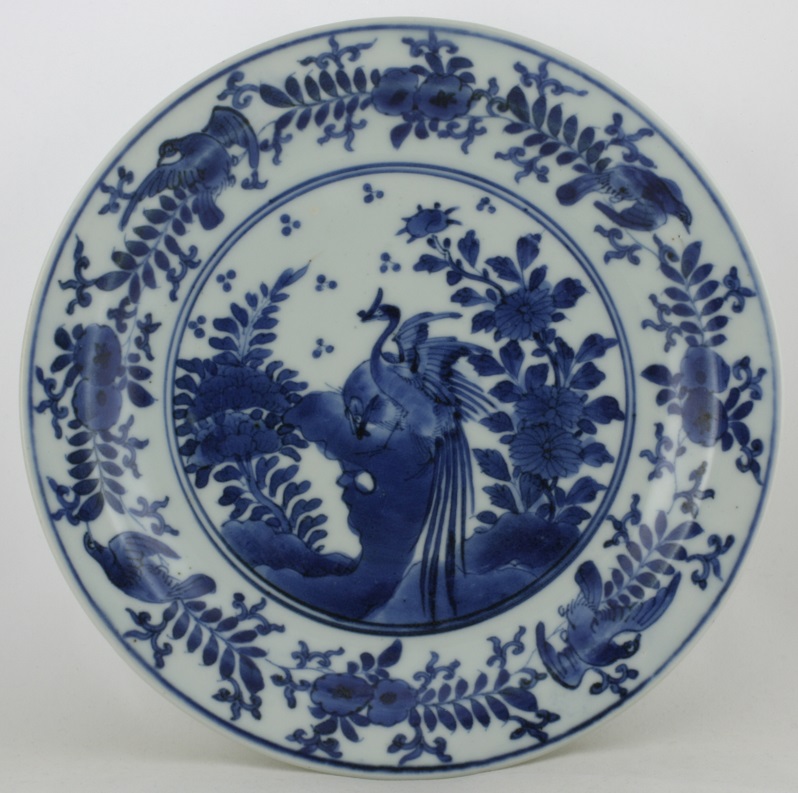
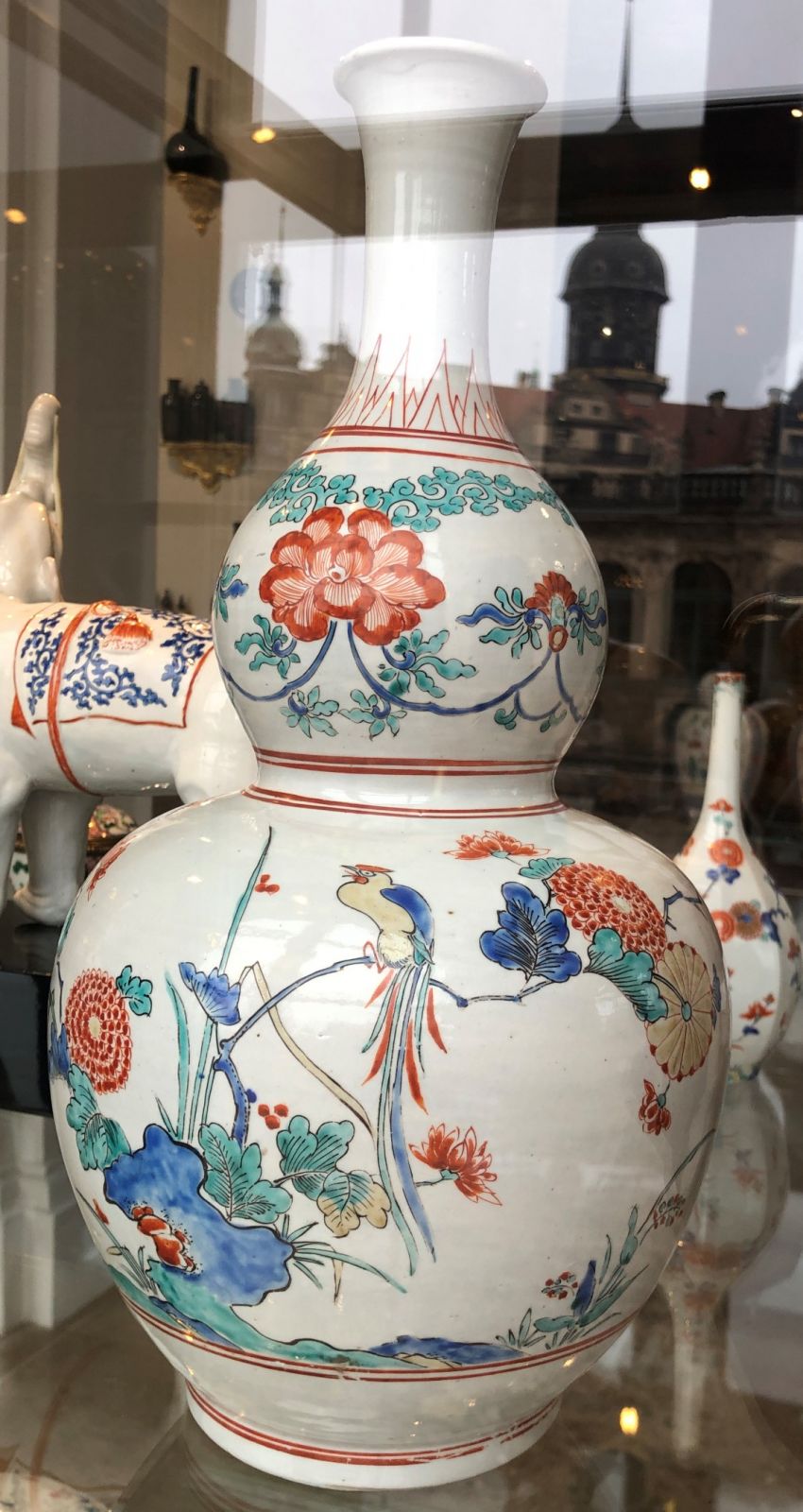
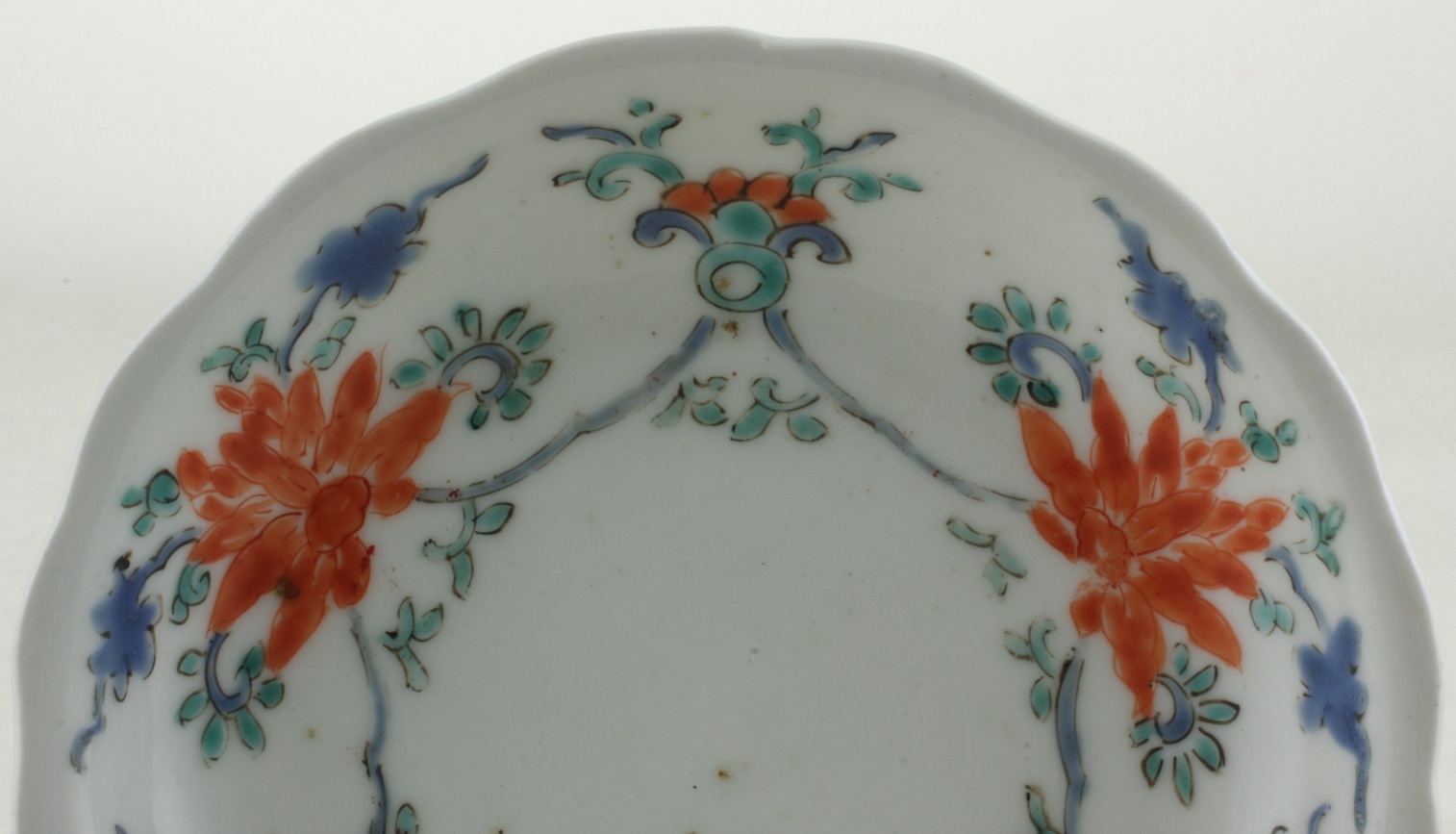
 create websites
create websites